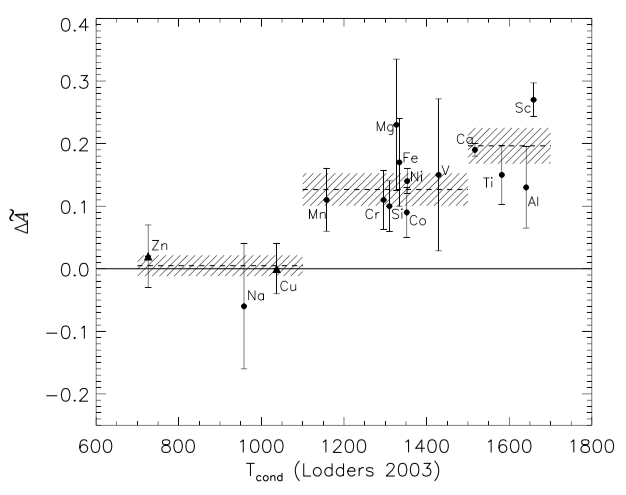Rocky accretion in a young solar-type star
In the last two decades, starting with the discovery of the first extrasolar planet around 51 Peg in 1995, growing efforts have been made in order to detect exoplanets (i.e. planets orbiting other stars) and to study their nature, orbits and the characteristics of their hosting stars. These studies have shown that most of the exoplanets so far discovered did not form in their current configurations: they experienced processes of orbital reconfiguration or planet migration charaterizing the first few hundred Myr of the system's evolution when the chaotic growth of planetesimals into planets was still active and the newly formed planets were in the process of clearing their orbits from gas, dust, and rocky objects, i.e. the residuals of protoplanetary disks. It is likely that during the chaotic development of the system's architecture part of the rocky material orbiting around the star might have been induced to move into unstable orbits and eventually fall onto the central star. After penetrating into the stellar atmosphere, the rocky mass is rapidly dissolved and mixed with the ambient matter. Thus, a major consequence of such dramatic events is the possible increase of the photospheric metallicity (i.e. the abundance of elements heavier than helium).
Such an enhancement has been actually measured in a young solar-type star by a team led by Lorenzo Spina, a young Italian astronomer who got his PhD in 2014 at the University of Florence and is currently at the Universidade de Sao Paulo (Brazil). The research was carried out in collaboration with Francesco Palla, Sofia Randich, Germano Sacco, Laura Magrini, Elena Franciosini, Lorenzo Morbidelli (Arcetri Observatory), and other European and Chilean astronomers that participate in the Gaia-ESO Survey.
The Gaia-ESO Survey is a large public spectroscopic survey that is observing all the components of the Milky Way, through the FLAMES spectrograph mounted at the Very Large Telescope of ESO in Paranal (Chile). In 2011 the Gaia-ESO Survey observed the members of Gamma Velorum, a young open cluster located 350 parsecs away from the Sun and with an estimated age of 15 Myr. These observations led to the identification of a Gamma Velorum member (the star 2MASS J08095427-4721419) that is significantly enriched in metals relative to the other members of the same cluster. Open clusters are groups of stars formed from the same nebula and, for this reason, their members are expected to share the same chemical composition.
However, a detailed chemical analysis performed by Lorenzo Spina and his collaborators revealed that the observed enhancement is limited only to the refractory elements and that the overabundance of a given element is correlated with its condensation temperature (see Fig. 1). Because of their higher condensation temperature, the refractory elements are thought to be the main components of the solids that accrete onto planets and planetesimals. Most interestingly, the trend between abundance and condensation temperature mirrors the composition seen in planetary material (e.g. meteorites or rocky planets). This suggests that the abundance pattern observed in 2MASS J08095427-4721419 originated from the enrichment subsequent to the ingestion of planetary-mass-sized rocky objects.
 |
Fig.1: Chemical pattern of 2MASS J08095427-4721419 relative to another member of the Gamma Velorum cluster as a function of the condensation temperature (Tcond). The horizontal dashed lines represent the weighted means of these differential abundances within each class of elements, i.e. volatiles (Tcond<1000K), moderately and super refractory elements (with higher Tcond). (From Spina et al 2015) |
Models of young stars similar to 2MASS J08095427-4721419 indicate that the observed iron overabundance could be the result of the engulfment of ~30 M⊕ of rocks locked into planets or planetesimals. However, such a massive infall could not have produced any detectable iron enhancement if the accretion episode did occur when the solar-type star was younger than ~10 Myr. Since the metal-rich star is 15 Myr old (the age of the Gamma Velorum cluster), the accretion event must have occurred more recently, not later than 5 Myr ago, when planets around the star were presumably already formed.
The results found in the case of the young solar-type stars 2MASS J08095427-4721419 are presented in "The Gaia-ESO Survey: chemical signatures of rocky accretion in a young solar-type star", by Lorenzo Spina et al, published on Astronomy and Astrophysics (A&A 2015, 582,6). They open the possibility to extend the search for other stars with peculiar chemical abundances. Finding a population of such objects will allow us to trace the highly dynamical environment that characterized the early evolution of other systems similar to our own which is now too old to show any peculiar feature.
Edited by A. Gallazzi and L. Spina, 18/11/2015



